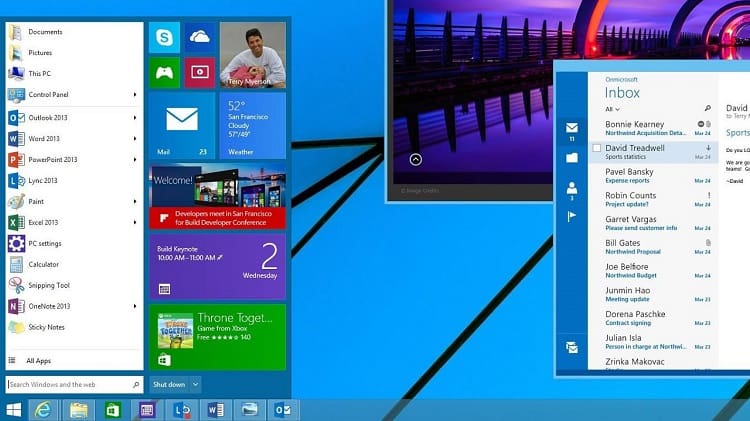
We here – you, me, that other guy reading this article – we follow technology. We are probably reading a few tech blogs. Probably we all tried a pre-release software a few times, just because we were curious. Me, personally? I’m a geek with that stuff. My browser is always in beta. I jump to the next version of software as soon as I have an opportunity. Even system updates don’t make me as anxious as they make the most people out there. If it means I’m going to say on the bleeding edge, then well, yeah, I can do a restart again.
My mother? Not so much.
It’s easy to lose track of other people’s preferences when you’re spending all of your time on the Internet. Interacting with the world of technology becomes your second nature and suddenly you don’t exactly understand why your cousin who works in a bookstore does not really wait for you to update his Office.
This is the double nature of the IT world. Evolution means change. At the same time, to be able to innovate, we need those innovations to be popular. To succeed in that, we need our audiences to like what we’re doing.
And the audience? If you’re any popular, most of your audience wants you to stay exactly the same.
“Don’t change”, they’ll tell you. And then when you do change, they will hate you for it. But here’s the thing: if you don’t change, you’ll die. This is one of the greatest mysteries of user experience.
Microsoft and the Windows 8 Innovation
The story of Microsoft and Windows is a good example. As you may have heard, Windows 10 was announced a few days back. Does it look like Windows 8? Or Windows 7? It looks like both, mixed and mashed in order to satisfy two imaginary audiences at once: those people who want innovations and those who want traditions.

A lot of people say that the whole problem with Windows 8 was that it was too “new”. They say Windows 8 proved to be not really popular just because it “innovated too much”. And now, with the new Windows 10 coming up, Microsoft gets back to the traditions it left behind – and that’s the reason that this time, “Microsoft will hit it out of the ballpark”. Remember the popular story about every other version of Windows being good?
Microsoft does have its history with the innovation vs tradition debate. Actually, it’d be hard to find any other company that struggles so much with this debate. When you have an operating system that billions of people use on daily basis, it’s hard. Some people actively want you to innovate. But most of them? They want for everything to stay exactly the same. They are vocal about it. And now it looks like Microsoft is not innovating anymore, succumbing first and foremost to the “bring-Start-menu-back” folk. Start menu is in fact back. The desktop experience is at the center again.
However, it’s not so easy.
My take on the Innovation vs. Tradition debate
If you say that the problem of Windows 8 was “too much innovation”, you’re wrong. To explain why, I have to start with a personal anecdote to share with you (for which I am sorry, but hey, it does illustrate the topic).
A few years back I was attached to a pretty popular (albeit local) blog on popular entertainment. We grew in popularity while the blog was running on a standard WordPress theme. The thing about the standard WordPress theme (it was the 2010 theme) is that it’s pretty good. It’s simple, it allows for a degree of customization, people know how it works the second they enter. Gets the job done. At the same time, millions of other blogs were running on the same template. They looked the same. We knew that if we wanted to get serious, we had to redesign.
When we did, we changed everything.
From the width of the main column to the concept of the site itself. Our blog was a place people came to talk; we removed the last comments feed. People came to hear the news from us; we decided to do more feature sized articles. We completely disregarded our traditions. Instead, we rethought our blog from the ground up.
People hated it.
And not in the “they-hated-us-before-they-loved-us” fashion. We actually lost a huge chunk of our audience after the redesign. You know Template Monster? I work there now, but at the time we stormed their whole WordPress section and tried every trick we found there. It didn’t work. We made mistakes. And now, we were suffering for it. For a long time, I thought that we should have listened to our readers, that we should have made the new site more like the old one, that we should have chosen traditions instead of innovation. We were doing well enough, why the hell would we choose to ruin it? I was heartbroken. And I was wrong.
To understand why, we need to visit an unlikely place – Russian news websites. Specifically, Lenta.ru. Lenta.ru is one of the most popular news websites in Russia (at least before the government came in with the censorship hammer and made the owner fire the editor-in-chief; the whole staff followed voluntarily). I came to know it after the SND 2012 design awards. SND called the new Lenta.ru design “beautiful” and gave the world’s best designed website title to it.
“It has the classic elegant look of big news site, yet still feels approachable, with its own fresh style touches. This is especially impressive given the amount of stories it produces and the size of its audience.”
I liked this design. I liked it so much that I decided to know more about it. I’ve asked around and here’s what I found out.
This was no easy redesign.

The Lenta.ru editorial team decided to completely disregard their traditions and rethought their site from the ground up. They removed some of the most popular sections of the site because they no longer saw them fit. Their audience came to read news; they decided to produce more longreads. The majority visited via desktop PCs; they decided to focus on mobile experience. When the design came out, the audience hated it. And then they loved it.
In the beginning of this year, Lenta.ru became the second most visited news site in Russia – and that’s because the first one was buying traffic. It kept breaking records. This story resonated with me. It was like the story of our own website but with a happy ending. That’s how I understood something important.
Summing it uphttps://www.interaction-design.org/literature/topics/mobile-ux-design?ep=ug0
The innovation vs tradition debate is not really about innovation vs tradition.
In order to stay successful, you have to innovate. It’s not even a question. Instead, the single most important thing is implementation. In other words, it’s how, not why.
That’s the reason Windows 8 was not popular – not because it innovated, but because it failed to make those innovations work. Not because the Metro design was different but because it wasn’t connected to the old design in a coherent way and that looks ugly, as well as complicated. The whole idea of Windows 10 is to try taking the old innovations and make them work, not bringing the Start menu back.
And that’s why we failed, too. We were on the right track. We had the right ideas. We were right to innovate – we had to innovate – but we had to do it properly, too. For example, deciding to make each blog post appear in the feed with a full screen image was a bad idea.
Time changes fast and you have to change with it. When you think about user experience, don’t be fooled by the idea that users are in charge. The most important thing in the world is to make them happy, that’s true – but they’re not in charge. You are. And only you know how to make them happy.
Innovate. Do something new. Don’t stay in the same place, forever. There’s a reason why articles on how to maximize your audience never tell you to stay exactly the same. But when you do it, when you come up with a new idea – make sure that it’s truly good. If you can’t sleep because you can’t wait to implement it, that’s a good idea.
And then – then make it the best it could be. Innovations means moving forward. When you need to get somewhere, you don’t think about whether you have to step forward. You step forward.
What you think about is not falling.
Want to learn more?
Want to get an industry-recognized Course Certificate in UX Design, Design Thinking, UI Design, or another related design topic? Online UX courses from the Interaction Design Foundation can provide you with industry-relevant skills to advance your UX career. For example, Design Thinking, Become a UX Designer from Scratch, Conducting Usability Testing or User Research – Methods and Best Practices are some of the most popular courses. Good luck on your learning journey!
(Lead image: Depositphotos)
